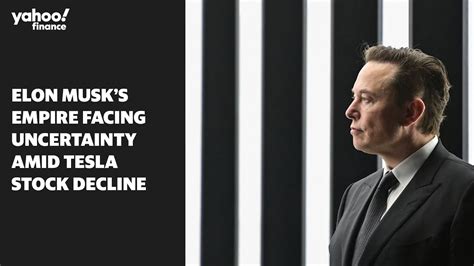
Mark Cuban’s $33 million investment across 85 deals on ABC’s “Shark Tank” could be yielding substantial profits, with some companies experiencing explosive growth and successful exits. While Cuban acknowledges that many startups fail, the overall performance of his “Shark Tank” portfolio appears promising, driven by strategic investments and the “Shark Tank” effect.
Mark Cuban, the billionaire entrepreneur and owner of the Dallas Mavericks, has invested approximately $33 million of his own money in various companies featured on ABC’s hit reality show “Shark Tank.” Over 13 seasons, he’s participated in 85 deals, a significant portion of the show’s overall investment activity. While not all ventures succeed, some have generated considerable returns, suggesting a potentially lucrative outcome for Cuban’s “Shark Tank” portfolio.
Investment Strategy and Portfolio Overview
Cuban’s investment approach on “Shark Tank” is multifaceted, focusing on both the immediate potential of a product or service and the long-term viability of the business model. He often targets companies with strong branding, unique selling propositions, and passionate founders. Unlike some of his fellow sharks who might focus on quick returns, Cuban often emphasizes building sustainable businesses with lasting value.
“Shark Tank,” since its debut in 2009, has become a cultural phenomenon, providing a platform for entrepreneurs to pitch their ideas to a panel of seasoned investors, the “sharks.” The show’s format not only offers financial investment opportunities but also provides invaluable exposure to participating businesses, often resulting in a surge in sales and brand recognition, commonly referred to as the “Shark Tank” effect.
Cuban’s $33 million investment is spread across a diverse range of industries, from food and beverage to technology and consumer goods. While it is impossible to provide an exact, real-time valuation of his entire “Shark Tank” portfolio due to the private nature of these investments, various sources and anecdotal evidence suggest that several companies have achieved significant milestones, contributing to the overall potential profitability.
One of the key aspects of Cuban’s strategy is his hands-on approach. He often takes an active role in advising and mentoring the companies he invests in, leveraging his extensive business experience to help them navigate challenges and capitalize on opportunities. This involvement can range from providing strategic guidance on marketing and sales to assisting with operational efficiencies and expansion plans.
Success Stories and Notable Investments
Several of Cuban’s “Shark Tank” investments have emerged as notable success stories, demonstrating the potential for substantial returns. Although Cuban himself has not publicly disclosed the exact financial performance of each investment, publicly available information and reports provide insights into some of the most promising ventures.
-
BeatBox Beverages: One of the most prominent success stories is BeatBox Beverages, a party punch product that gained significant traction after appearing on “Shark Tank.” Cuban invested $1 million for a 33% equity stake in the company. Since then, BeatBox has experienced explosive growth, expanding its distribution network nationwide and establishing itself as a leading player in the ready-to-drink alcoholic beverage market. While specific revenue figures are not always publicly available, industry analysts estimate that BeatBox’s annual sales have reached tens of millions of dollars, making it one of Cuban’s most successful investments.
-
Tower Paddle Boards: Another successful venture is Tower Paddle Boards, a direct-to-consumer paddle board company. Cuban invested $150,000 for a 30% stake in the company. Tower Paddle Boards has since grown into a multi-million dollar business, capitalizing on the increasing popularity of paddle boarding and leveraging its online sales channels. The company has expanded its product line to include inflatable paddle boards, accessories, and apparel, further diversifying its revenue streams.
-
Scrub Daddy: Although Cuban didn’t initially invest in Scrub Daddy on the show, he later became involved with the company, recognizing its immense potential. Scrub Daddy, a uniquely shaped and textured sponge, has become one of the most successful products to emerge from “Shark Tank.” While Cuban’s specific financial arrangement with Scrub Daddy is not publicly disclosed, the company’s remarkable sales figures – reportedly exceeding $200 million in lifetime sales – suggest that his involvement has been highly profitable.
-
Simple Sugars: Simple Sugars, a skincare company that uses sugar as an exfoliant, is another investment that has yielded significant results. Cuban invested $100,000 for a 33% stake in the company. Simple Sugars has expanded its product line and distribution channels, reaching a wider customer base and increasing its sales revenue. The company’s focus on natural ingredients and its unique product offering have contributed to its sustained growth.
These are just a few examples of the many companies in Cuban’s “Shark Tank” portfolio that have achieved notable success. While not every investment turns into a home run, the overall performance of his portfolio suggests that his strategic approach and active involvement have paid off.
Challenges and Risks
Despite the potential for high returns, investing in startups through “Shark Tank” also presents significant challenges and risks. The failure rate for startups is notoriously high, and many of the companies featured on the show face intense competition, operational hurdles, and funding constraints.
“Shark Tank” provides a platform, but it does not guarantee success. Many companies struggle to scale their operations, manage their inventory, and maintain their brand image after the initial surge in popularity that follows their appearance on the show. Furthermore, some entrepreneurs may lack the experience and expertise necessary to navigate the complexities of running a business, even with the guidance of seasoned investors like Cuban.
One of the biggest challenges is maintaining the quality and consistency of the product or service while scaling production to meet increased demand. Companies that fail to address this issue risk damaging their brand reputation and losing customers. Another challenge is managing cash flow effectively, as many startups struggle to balance their expenses with their revenue.
Cuban himself has acknowledged that not all of his “Shark Tank” investments have been successful. In some cases, companies have failed to meet their sales projections, encountered operational problems, or simply run out of money. However, he maintains that the potential for high returns from a few successful investments outweighs the losses from those that fail.
The “Shark Tank” Effect
The “Shark Tank” effect is a phenomenon that refers to the boost in sales, brand awareness, and investor interest that companies experience after appearing on the show. This effect can be particularly pronounced for companies that secure a deal with one of the sharks, as the association with a well-known investor like Cuban can lend credibility and attract additional funding.
However, the “Shark Tank” effect is not a guaranteed path to success. Companies must be prepared to capitalize on the increased attention and demand by having a solid business plan, a strong team, and a scalable infrastructure. Those that fail to do so risk squandering the opportunity and fading into obscurity.
One of the key benefits of the “Shark Tank” effect is the exposure to a large and diverse audience. The show is watched by millions of viewers, many of whom are potential customers, investors, or partners. This exposure can be invaluable for companies that are looking to expand their reach and grow their business.
In addition to the direct sales generated by the “Shark Tank” effect, companies can also benefit from the increased brand awareness and media attention. Many companies receive coverage in news articles, blog posts, and social media, further amplifying their message and reaching a wider audience.
Cuban’s Perspective
Mark Cuban has consistently emphasized the importance of due diligence, strategic planning, and active involvement in his “Shark Tank” investments. He has also stressed the need for entrepreneurs to be passionate, persistent, and adaptable.
In various interviews and public appearances, Cuban has shared his insights on what makes a successful “Shark Tank” pitch. He looks for entrepreneurs who have a clear understanding of their business, a compelling story, and a willingness to work hard. He also values transparency and honesty, as he believes that trust is essential for a successful partnership.
Cuban has also spoken about the importance of learning from failures. He acknowledges that not every investment will be a success, but he believes that every experience provides valuable lessons that can be applied to future ventures. He encourages entrepreneurs to embrace failure as a learning opportunity and to never give up on their dreams.
“You’ve got to know your numbers,” Cuban has said, emphasizing the importance of financial literacy for entrepreneurs. He also stresses the need for entrepreneurs to be able to articulate their vision clearly and concisely.
Future Outlook
The future outlook for Cuban’s “Shark Tank” investments remains positive, despite the inherent risks and challenges. As the show continues to attract a large audience and generate significant buzz, the potential for successful exits and profitable ventures remains high.
Cuban’s strategic approach, active involvement, and willingness to take risks have positioned him as one of the most successful investors on “Shark Tank.” His track record of identifying and supporting promising companies suggests that his portfolio will continue to generate substantial returns in the years to come.
The “Shark Tank” effect will likely continue to play a significant role in the success of Cuban’s investments. As more companies appear on the show and gain exposure to a wider audience, the potential for increased sales, brand awareness, and investor interest will remain a powerful driver of growth.
However, the long-term success of Cuban’s investments will ultimately depend on the ability of the entrepreneurs to execute their business plans effectively, adapt to changing market conditions, and maintain their competitive edge. Those who can do so will have the best chance of achieving sustained growth and generating significant returns for Cuban and his fellow investors.
The Broader Impact of “Shark Tank”
Beyond the financial returns for investors like Mark Cuban, “Shark Tank” has had a broader impact on the entrepreneurial landscape. The show has inspired countless individuals to pursue their own business ideas, provided a platform for showcasing innovative products and services, and educated viewers about the fundamentals of business and investing.
“Shark Tank” has also helped to democratize access to capital for entrepreneurs who might otherwise struggle to secure funding from traditional sources. By providing a platform for pitching ideas to a panel of experienced investors, the show has leveled the playing field and given aspiring entrepreneurs a chance to realize their dreams.
The show has also played a role in promoting financial literacy and entrepreneurship education. By showcasing the challenges and rewards of starting and running a business, “Shark Tank” has inspired viewers to learn more about finance, investing, and entrepreneurship.
Conclusion
Mark Cuban’s $33 million investment in “Shark Tank” companies represents a significant commitment to supporting and fostering entrepreneurship. While the inherent risks of investing in startups are undeniable, the potential for high returns and the broader impact of the show on the entrepreneurial landscape make it a worthwhile endeavor. With strategic investments like BeatBox Beverages, Tower Paddle Boards, Scrub Daddy, and Simple Sugars, Cuban’s returns appear very positive.
Cuban’s hands-on approach, strategic insights, and willingness to take risks have positioned him as one of the most successful investors on “Shark Tank.” As the show continues to evolve and adapt to changing market conditions, his portfolio is poised to generate substantial returns and contribute to the growth of the entrepreneurial ecosystem. The “Shark Tank” effect ensures continuous influx and visibility for his investments, setting the stage for long-term profitability.
Frequently Asked Questions (FAQ)
-
How much money has Mark Cuban invested in “Shark Tank” companies?
Mark Cuban has invested approximately $33 million in companies featured on “Shark Tank” over 13 seasons.
-
What is the “Shark Tank” effect?
The “Shark Tank” effect refers to the increase in sales, brand awareness, and investor interest that companies experience after appearing on the show. This effect is often due to the show’s large audience and the association with well-known investors like Mark Cuban.
-
What are some of Mark Cuban’s most successful “Shark Tank” investments?
Some of Cuban’s most successful “Shark Tank” investments include BeatBox Beverages, Tower Paddle Boards, Scrub Daddy (though his initial involvement was not on the show), and Simple Sugars.
-
What is Mark Cuban’s investment strategy on “Shark Tank”?
Cuban’s investment strategy focuses on identifying companies with strong branding, unique selling propositions, and passionate founders. He often takes an active role in advising and mentoring the companies he invests in.
-
What are the challenges of investing in startups through “Shark Tank”?
The challenges include the high failure rate of startups, intense competition, operational hurdles, and funding constraints. Maintaining quality and consistency while scaling production is a significant issue. The “Shark Tank” platform doesn’t guarantee success, and companies must be prepared to capitalize on the increased attention and demand.









